By Emily Bibb
With the Great Resignation on everyone’s mind, my company recently reached out to its global userbase of brands and community comprised of more than 5,000 agencies to understand how they have been impacted. More than half said they were or thought they could be affected by team changes in the coming months, and, despite their experience, 65% will keep remote work solutions in place in 2022. A poll by Gallup had similar findings: More than three-fourths of employees surveyed said: “their employer will allow people to work remotely going forward, at least partially.”
Not only does this tell me that there continues to be uncertainty as we begin the new year, but also how to best build teams should be top of mind. In this new world, employees continue to demand more flexibility and companies require more productivity to thrive.

In a dispersed workforce where teams are distributed in location, skillset and often across organizations, the challenge isn’t producing great work. The best ideas don’t happen in the same place. (If your business has survived the past two years, then you know this.) Today, every business has the opportunity and mandate to develop new processes and approaches to team building that instill trust, help generate better ideas from employees anywhere and improve communication to benefit the greater good of the organization.
This path to success starts with radical transparency.
Many might argue that transparency has been a requirement for years to ensure the health of organizations, particularly associated with leadership communicating ideas and changes to the broader organization in a timely way. But today’s transparency requires much more — not just a top-down approach, but one that is also bottom-up, inside out and outside in. The inputs and outputs require more attention and more detail in order to ensure your organization is marching to the same beat and working toward the same goals. This isn’t as easy as when you’re in the same office, so consider its importance as remote and hybrid work continues.
Here are just some of the ways to jumpstart radical transparency in your organization.
Develop 360-degree branding.
Build your brand in a way that is transparent and consistent across every single touchpoint, including marketing, sales, recruiting, employees — the list goes on. Do not stop at your customer or at channels with a direct return on investment. Create an authentic narrative that openly shares your position, founding story and values with anyone who interacts with your organization internally, externally and from afar.
Define your hybrid.
As dispersed organizational charts become the standard, it’s key to prevent information silos and any feeling of employees “being on their own” while remote. This means you have to understand your team better than ever to meet them where they are, both mentally and physically, and to drive communication. Identify what remote or hybrid means to your organization — such as expectations around hours, working habits and styles — and then establish daily structures where your team can collaborate outside of your communication and messaging platform. Develop regular standups, brainstorm sessions and comprehensive new hire orientations as well.
Emphasize culture.
We spend more time than we’d probably like to admit working with our colleagues, so I believe going beyond the daily deliverables and providing opportunities to build camaraderie can do wonders for productivity. Investing in office meetups and company offsites can provide a reprieve from the daily routine. Knowing more about colleagues both personally and professionally can help to build trust and a support system to help navigate the good and the bad days.
Implement bottom-up mentorship.
Information gaps often occur with a breakdown of trust, thus disrupting transparency. At the core of trust is mentorship, which shouldn’t be the sole responsibility of leadership or the most tenure colleagues. Encourage your team to approach situations with a mentor’s mentality. Support, teach, listen and learn. These qualities will naturally allow for a flow of information that has no ego or agenda.
Create a toolbox.
The innovation around workplace tools has been tremendous, and quick adoption of these tools can give you a huge advantage in both productivity and the sharing of information. Project management tools, for example, can empower collaborative work and accountability. Similarly, visual collaboration tools can be huge in terms of idea generation and distribution.
Lead authentically.
Radical transparency has to start somewhere, and that somewhere is with you. No matter your title or position in the company, lead through authenticity. Show up as the truest version of yourself. Be open with your colleagues and management on your ideas, struggles and successes. Have the hard conversations. Put forward those lofty goals. Win (and fail) together. The minute this stops, so, too, does the trust and, ultimately, transparency.
The idea of radical transparency spans everything from brand messaging, internal processes and, of course, leadership. Taking this approach changes how information is presented and the way jobs get done. It also creates a culture of ownership and productivity within your organization.
Click here for original article
Priority Management is a worldwide training company with 55 offices in 15 countries. We have successfully trained more than two million graduates in Priority workshops. Our programs help companies and people be more effective and manage their workflow in and out of the office by providing tools, processes and discipline. Simply put – A Better Way To Work! Clients range from Fortune 500 companies, small-to-medium businesses and government/military employees.
Click Here to learn more about how Priority can help you and your team WorkSm@rt, develop essential management skills and the competencies to….make life and work better and happier!



